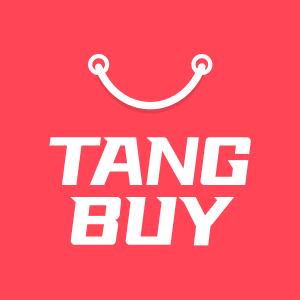Top Tips to Make Money Dropshipping and Boost Your Profits in 2025

If you want to make money dropshipping in 2025, you need more than luck. The global dropshipping market is booming, with projections showing it could reach $464.4 billion in 2025 and keep growing fast.
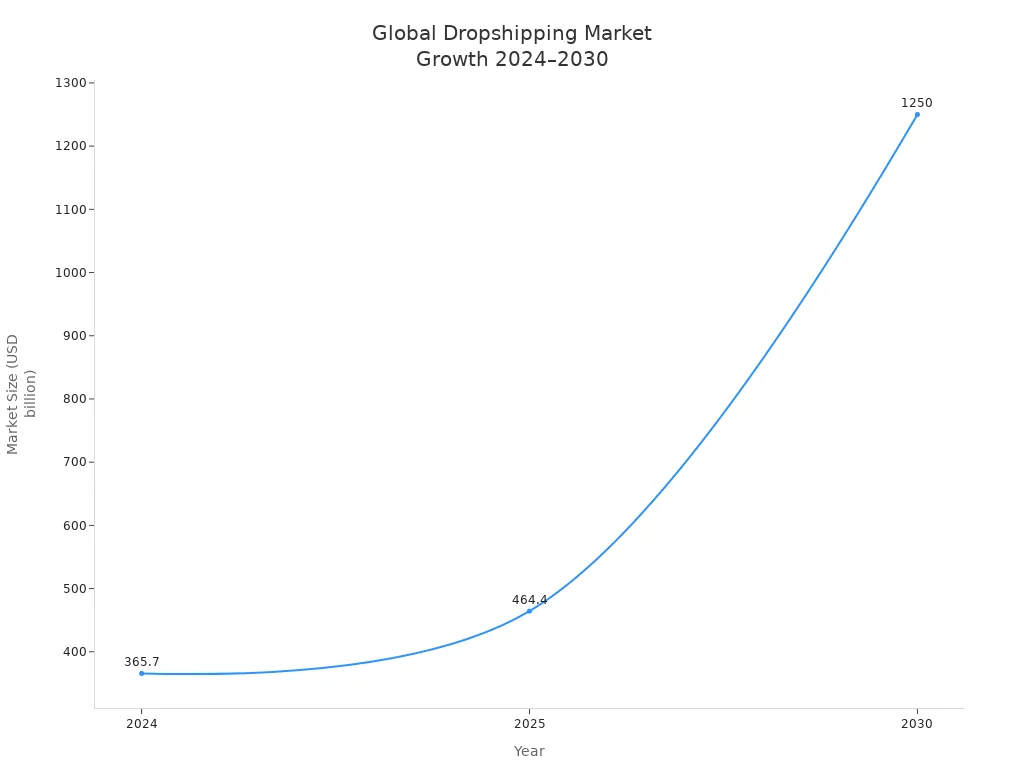
Still, only about 10% of new dropshipping businesses turn a profit in their first year. You can boost your odds by picking the right niche, working with reliable suppliers, and focusing on smart store design and marketing. Start strong, avoid shortcuts, and learn from those who have succeeded.

Key Takeaways
Pick products that many people want but not many shops sell. This helps you make more money and be different from others.
Work with suppliers you can trust. Test how good their service is. Use more than one supplier to lower your risks.
Choose a platform like Shopify or WooCommerce. Make sure it is easy for you to use and matches what you want to do.
Make your shop load quickly. Keep it easy to move around. Use clear buttons so people know what to do. This helps you sell more.
Use paid ads and SEO to get more people to visit your shop. You can also use influencer marketing to help people trust your shop.
Watch your money closely. Use a business account. Plan your budget and check your spending often.
Use tools to do order fulfilment and customer support for you. This saves you time and stops mistakes.
Give fast shipping and clear returns. Be very helpful to your customers. This makes people want to come back and trust your shop.

Profitable Products
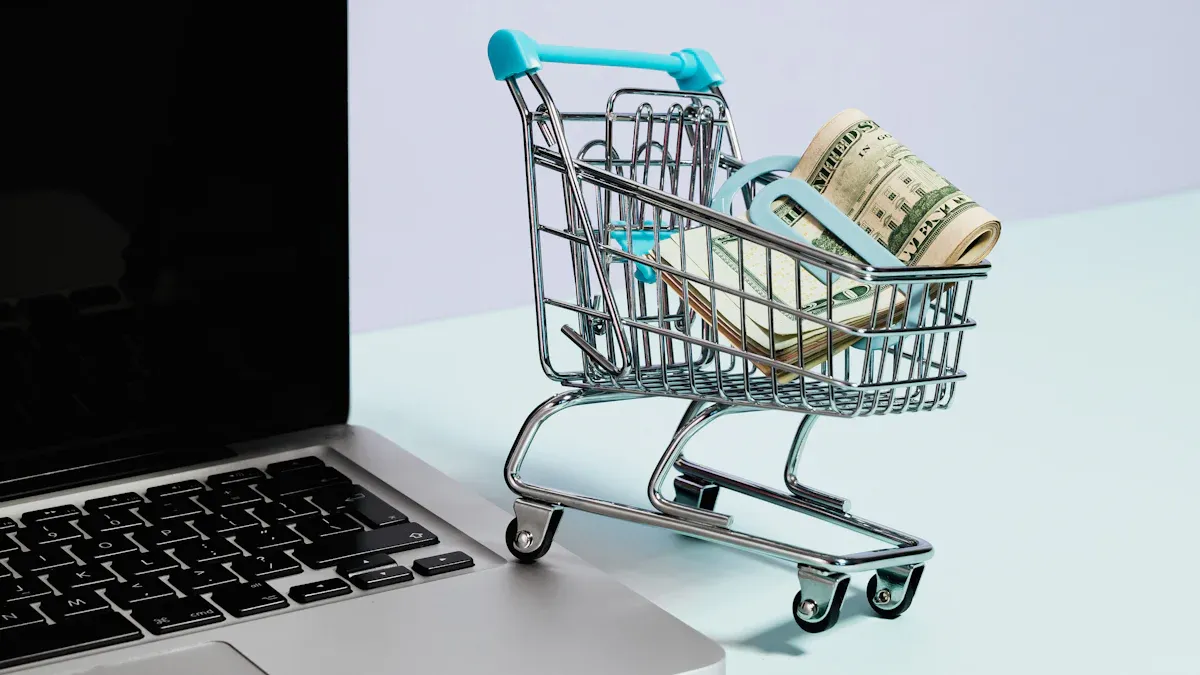
Choosing the right products is the heart of dropshipping success. You want to find items that people want, but not everyone is selling. Let’s break down how you can spot those winning products and boost your profits.
Niche Selection
Trends
Spotting trends early gives you a big advantage. Use tools like Google Trends, Instagram, and TikTok to see what’s hot right now. These platforms show you what people are searching for and talking about. If you notice a product popping up everywhere, it could be your next bestseller. Tools like AliExpress Dropshipping Center and AutoDS Winning Products Hub also help you find trending products and reliable suppliers quickly.
Demand
You want products with high demand but low competition. That’s the sweet spot. Social media platforms and AI-driven tools like Sell The Trend or EcomHunt let you track what’s selling and what’s not. Competitor analysis helps you spot gaps in the market. Here are some examples of high-demand, low-competition niches for 2025:
Niche Example | Demand (Monthly Searches) | Competition (Keyword Difficulty) | Market Insight |
|---|---|---|---|
Mushroom Lamps | 21,000 | Very Low (0) | Unique home décor, multiple styles |
Bamboo Pyjamas | 13,000 | Low (7) | Eco-friendly fashion, growing interest |
Waterproof Drones | 1,200 | Low (5) | Niche for hobbyists, high-ticket item |
Neuropathy Socks | 4,900 | Very Low (3) | Health niche, pain relief |
Wood Stoves | 36,000 | Low (5) | Seasonal, sustainable heating |
Portable Nebulisers | 7,000 | Low (6) | Medical device, portable and convenient |
Cervical Pillows | 14,000 | Low (9) | Wellness, neck pain relief |
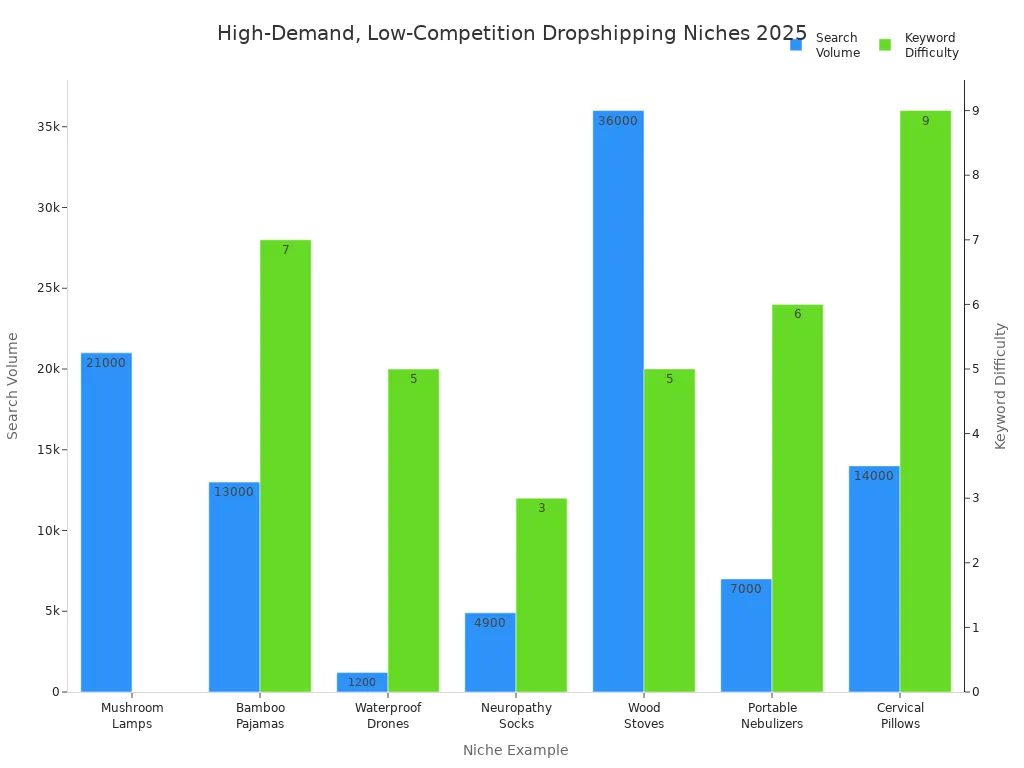
Tip: Don’t just chase trends. Balance your store with evergreen products that sell all year round, like kitchen gadgets or baby essentials.
Product Margins
Cost Analysis
You need to know your numbers. Always include the product price, shipping, taxes, platform fees, and marketing costs. Most dropshipping products have profit margins between 10% and 40%. If you want to go higher, look for products with strong demand, manageable shipping, and a price between £20 and £70. For example, a computer table bought for £86 and sold for £169 gives you a margin of about 96.5%. That’s a big win!
Markup Strategies
Set your prices smartly. Start by checking what your competitors charge. If your product offers something extra—like better quality or faster shipping—you can charge more. Use tools like AMZScout to spot high-margin products. Remember, even small price tweaks can make a big difference to your bottom line.
Testing Ideas
Small-Scale Launch
Don’t go all in straight away. Test new products with a small order or a limited ad campaign. Run A/B tests on your product images and titles to see what works best. Use Facebook or Instagram ads to check if people are interested. Watch key numbers like Return on Ad Spend (ROAS) and Customer Acquisition Cost (CAC). If ROAS is much higher than CAC, you’re on the right track.
Customer Feedback
Ask your first customers what they think. Offer samples or discounts in exchange for honest reviews. Their feedback helps you spot problems early and build trust. Keep improving your products and marketing based on what you learn.
Note: Testing before scaling helps you avoid costly mistakes and keeps your business flexible.

Make Money with Suppliers

Picking good suppliers is very important in dropshipping. You want to earn more and avoid problems. Work with people you can trust. Here’s how you can choose the best suppliers, lower risks, and get deals that help you earn more.
Supplier Selection
Vetting
Never pick a new supplier too quickly. Take time to check them well. Use this table to see what matters most:
Key Factor | Explanation |
|---|---|
Product Quality | Try samples and check if items look like the photos. |
Shipping Speed and Fulfilment | Fast shipping builds trust. Look at packing, speed, and tracking. |
Warehouse Locations | Warehouses close to buyers mean faster and cheaper shipping. |
Price and Profit Margins | Compare prices and watch for hidden costs to keep profits high. |
Platform and Automation | Suppliers with order sync and tracking save you time and mistakes. |
Returns and Refunds | Clear rules help protect your money and keep buyers happy. |
Reputation | Pick suppliers with good reviews and a history of being reliable. |
You can also check suppliers by ordering samples or testing their systems. Try buying from your rivals to see how they send orders. If you want to do more, go to trade shows or talk to makers directly.
Communication
Talking well with suppliers makes things easier. Ask them about their products, delivery, and returns. If they answer fast and clearly, they care about your business. Trust from the start helps you avoid problems later.
Multiple Suppliers
Risk Reduction
Using only one supplier is risky. If they run out or ship late, you lose sales. Working with more than one supplier spreads the risk. You have a backup if something goes wrong.
Get products from different places to avoid running out.
Check backup suppliers early so you can switch fast.
Keep good relationships and talk often to fix issues quickly.
Product Range
Having more suppliers means you can sell more types of products. You can try new things and see what sells best. Suppliers with lots of products help you grow your shop easily.
Tip: Use automation tools to handle orders and stock from many suppliers. This keeps your shop working well, even when you are busy.
Negotiation
Pricing
To make more money, get the best prices. Before talking to suppliers, check market prices and set your goals. Show you are serious by telling them your order plans. Many suppliers give discounts if you order often.
Terms
Don’t just look at price. Ask about payment, shipping, and returns. Be open and try to see things from their side too. Always write down your deals, including price, shipping, payments, and returns. Check these deals often and keep talking to your suppliers. This helps you spot problems early and keep your business growing.
Note: Many dropshippers get 5-20% discounts by building trust and showing they will stay loyal.
Store Optimisation
Getting your store right makes a huge difference. You want visitors to feel confident, find what they need, and buy without any hassle. Let’s look at how you can set up your shop for success.
Platform Choice
Picking the right platform is your first big step. The best platforms make it easy to manage products, orders, and payments. They also help you connect with dropshipping apps and tools.
Shopify
Shopify stands out for its ease of use. You can set up your store quickly, even if you have no tech skills. Shopify supports many dropshipping apps like Spocket and Oberlo. It also offers 24/7 support and works with multiple languages and currencies. In the US, Shopify holds about 28% of the market, and it’s the top choice in Australia and Germany.
WooCommerce
WooCommerce is a favourite in the UK, sharing the top spot with Shopify at 22% market share. It’s a plugin for WordPress, so you get lots of flexibility. You can customise almost everything. WooCommerce works well for those who want more control and don’t mind a bit of setup. It’s also popular worldwide, with a 39% global market share.
Here’s a quick look at the top platforms for dropshipping in 2025:
Platform | Market Share (2025) | Key Dropshipping Features and Notes |
|---|---|---|
Shopify | ~30% (US market share) | Easy to use, integrates with many dropshipping apps, supports multiple languages/currencies, 24/7 support. |
WooCommerce | 39% (global market share) | Leading global e-commerce software, highly customisable, strong dropshipping presence. |
Squarespace | 19% (US market share) | User-friendly, decent dropshipping support, good for simple stores. |
Wix | 16% (US market share) | Flexible, supports dropshipping integrations, easy drag-and-drop builder. |
Ecwid | 4% (US market share) | Smaller but recognised, works with dropshipping, easy to add to existing sites. |
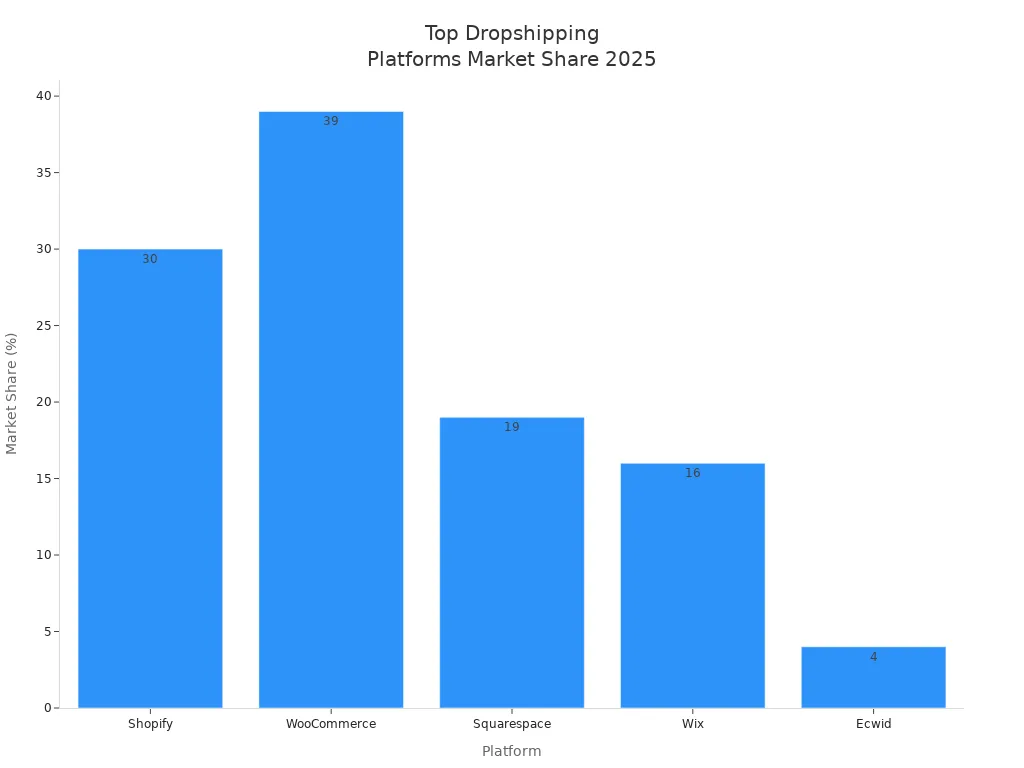
Tip: Choose a platform that matches your skills and business goals. If you want speed and support, go for Shopify. If you love customising, WooCommerce is a great pick.
Conversion Design
You want your shop to turn visitors into buyers. Good design helps people trust you and makes shopping easy.
User Experience
Focus on simple navigation. Clear menus and search bars help people find products fast. Make sure your site loads quickly—just a one-second delay can drop conversions by 7%. Over half of all purchases now happen on mobile, so your shop must look great and work smoothly on phones and tablets.
Calls to Action
Strong calls to action (CTAs) guide shoppers to buy. Use action words like “Add to Basket” or “Buy Now”. Place CTAs where people can see them, like above the fold and near product details. Use bright, contrasting colours to make buttons stand out. A/B testing helps you find which designs work best.
Here are some design tips that boost conversions:
Add customer reviews and trust badges.
Use urgency triggers like countdown timers.
Offer free shipping and easy returns.
Keep your checkout simple and fast.
Product Pages
Your product pages do the selling for you. Make them clear, helpful, and trustworthy.
Copywriting
Write product titles and descriptions that solve problems. Focus on benefits, not just features. Use keywords that shoppers search for, but keep your language natural. Tell a story or show how the product fits into someone’s life. Clear, honest writing builds trust.
Visuals
Use high-quality images and videos. Show the product from different angles. Let people zoom in. If you can, add videos of the product in use. Real customer photos and reviews help too. Make sure your images load fast, especially on mobile.
Note: Keep your product pages clutter-free. Highlight the most important details and make it easy for shoppers to buy.
Marketing Strategies
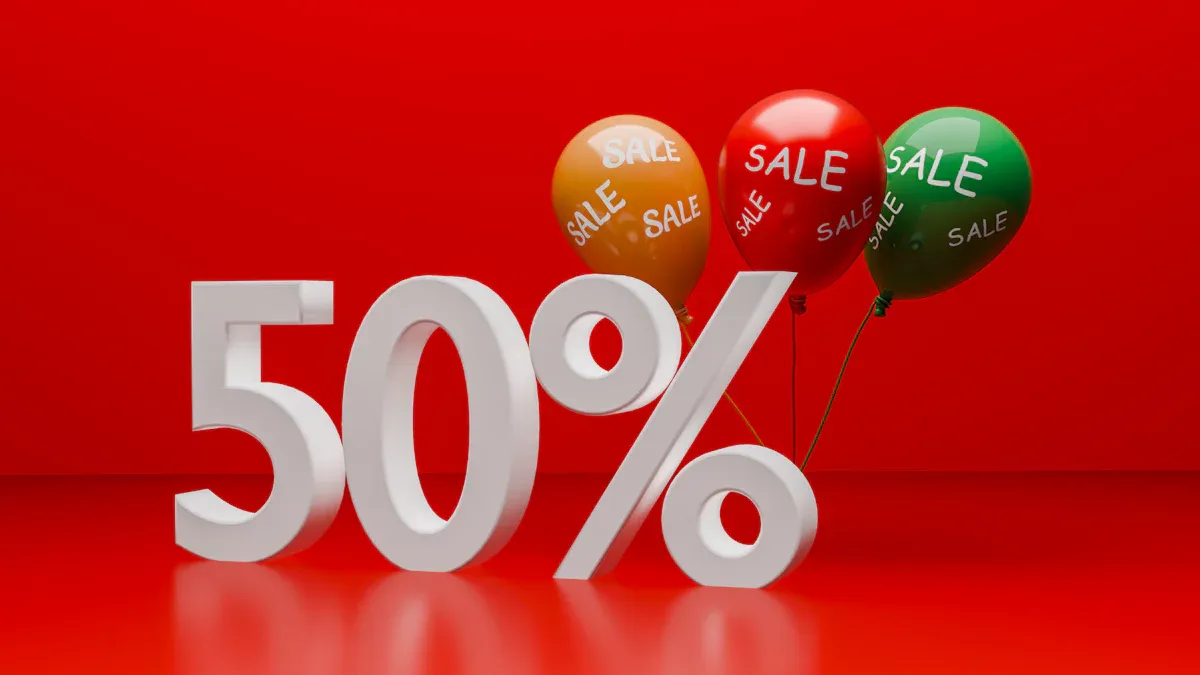
You can have the best products and a great store, but you won’t make money if no one visits your site. Strong marketing brings people in and turns them into buyers. Let’s look at the best ways to boost your visibility and sales in 2025.
Paid Ads
Paid ads help you reach new customers fast. You can target people who are most likely to buy your products.
Social Media
Social media ads work well for dropshipping. Platforms like Facebook, Instagram, and TikTok let you show your products to the right people. You can target by age, interests, or even what people have searched for. Instagram and TikTok are great for eye-catching products, especially if you want to reach younger shoppers. Facebook offers powerful tools to help you find your ideal audience.
Google Shopping
Google Shopping puts your products in front of people who are already searching for them. These shoppers often know what they want, so they are more likely to buy. Google Ads also gives you detailed reports, so you can see what works and adjust your budget.
Here’s a quick table to help you choose the right ad platform:
Advertising Platform | Key Strengths and Features | Target Audience / Use Case |
|---|---|---|
Facebook Ads | Advanced targeting, high conversion | Broad audience, custom targeting |
Google Ads | Keyword targeting, active buyers | People searching for products |
Instagram Ads | Visual, easy to manage | Younger, visual shoppers |
Pinterest Ads | Inspiring, keyword targeting | Creative, idea-seeking users |
TikTok Ads | Short videos, trend-driven | Gen Z, viral content fans |
Tip: Start with a small budget. Test different ads and see which platform brings the best results for your shop.
Organic Traffic
You don’t always need to pay for visitors. Organic traffic comes from people finding your store through search engines or helpful content.
SEO
SEO, or search engine optimisation, helps your shop appear in Google searches. Start by finding keywords that people use but don’t have much competition. Add these keywords to your product titles, descriptions, and blog posts. Make sure your site loads quickly and is easy to use. Build links from other trusted websites to boost your ranking.
Content
Content marketing builds trust and brings in visitors over time. Write blog posts that answer common questions or solve problems. Create guides, product reviews, or how-to articles. You can also write guest posts for other sites or join podcasts to reach new audiences and get valuable backlinks.
Note: Good SEO and content take time, but they keep bringing in free traffic long after you publish.
Influencers
Influencer marketing can give your brand a big boost. Influencers already have the trust of their followers, so their recommendations carry weight.
Micro-Influencers
Micro-influencers have smaller but loyal audiences. They often focus on a specific niche, which means you can reach people who care about your products. Working with micro-influencers usually costs less and brings higher engagement. For example, brands like tentree saw a 13x return on investment by partnering with micro-influencers who shared their values.
Affiliates
Affiliate marketing lets others promote your products for a commission. Affiliates can be bloggers, YouTubers, or even happy customers. This approach is cost-effective because you only pay when they help you make a sale. Affiliates help you reach new markets and build trust with their audiences.
Tip: Set clear goals and track results when working with influencers or affiliates. Look at engagement, traffic, and sales to see what works best.
Financial Management
Managing your finances well is the backbone of a successful dropshipping business. If you want to grow, you need to keep your money organised, plan for ups and downs, and use the right tools to stay ahead.
Business Account
Tracking
A dedicated business account keeps your personal and business money separate. This makes it much easier to track your sales, expenses, and profits. You can see exactly where your money goes. You avoid confusion when it’s time to do your taxes or check your business health. Here’s why a business account helps:
Keeps your records tidy for tax time.
Shows customers and suppliers you run a real business.
Protects your personal money if something goes wrong.
Handles bigger payments as your shop grows.
Tip: Always use your business account for every order, refund, and supplier payment. This habit saves you headaches later.
Analysis
You need to look at your numbers often. Check your sales, returns, and discounts. Watch your expenses, like supplier payments and shipping costs. Use accounting software that fits dropshipping. This helps you spot trends and make smart decisions. Regular analysis lets you see what works and what needs fixing.
Cash Flow
Planning
Cash flow means the money coming in and going out. Dropshipping can get tricky because you pay suppliers before you get paid by customers. To keep things smooth, plan your cash flow. Make a budget. List your income and all your costs—product prices, platform fees, ads, and more. Stick to your budget and adjust it when things change.
Here’s a simple cash flow checklist:
Track every sale and expense.
Use tools to watch overdue payments.
Negotiate with suppliers for better payment terms.
Cut costs that don’t help your business grow.
Set aside some money for emergencies.
Seasonal Trends
Sales can go up and down during the year. You might sell more in December and less in summer. Plan for these changes. Stock up before busy times. Save money during slow months. Diversify your products to spread risk and catch new trends.
Cashback & Tools
Cashback Services
Cashback tools help you save money on every order. AliSaver is a favourite for dropshippers. You get up to 4% back on AliExpress purchases. It also tracks price drops, compares prices, and even alerts you when prices change. Over time, these small savings add up.
Data Tools
Smart tools make your life easier. AutoDS automates product research, price checks, and order fulfilment. BeProfit tracks your profits and ad spend, showing you clear reports and dashboards. Chargeflow handles chargebacks, so you don’t lose money to disputes. These tools help you work faster, avoid mistakes, and see your real profits.
Note: Automate routine tasks where you can. This gives you more time to focus on growing your business.
Automation & Tools

Automation can really help your dropshipping shop. It saves you time and stops many mistakes. You can grow your business without hiring more people. Let’s look at how you can use automation and smart tools to make your shop run better.
Order Fulfilment
Integration
You want your shop and suppliers to work together easily. Integration tools link your shop with your suppliers. When someone buys something, the order goes straight to your supplier. You do not need to type in details by hand. This makes things faster and keeps customers happy.
Here are some top automation features that help you work better: 1. Real-time inventory sync stops you selling things you do not have. 2. Automatic order processing sends orders to suppliers quickly. 3. Bulk product uploads help you add lots of items fast. 4. Dynamic pricing tools help you keep prices good. 5. Shipment tracking tells customers where their order is. 6. Automated customer service answers easy questions quickly.
Platforms like Shopify, WooCommerce, and BigCommerce have apps like AutoDS, Oberlo, and ShipStation. These tools help with stock, orders, and shipping. You get more time to grow your business.
Error Reduction
Doing things by hand can cause mistakes. Automation helps stop errors by updating orders right away. You do not send the wrong item or miss an order. Tools like ShipBob and AliExpress Dropshipping Center help you track every order step. You get fewer complaints and more happy customers.
Tip: Automation helps you handle more orders without getting stressed. You can grow your shop and still stay in control.
Customer Support

Chatbots
Chatbots answer questions all day and night. They help with order updates, shipping, and simple problems. Customers get answers fast, even when you are asleep. Chatbots also collect feedback and show you common problems.
Helpdesk
A helpdesk keeps all customer messages in one place. You see every chat, email, or ticket together. This makes it easy to fix problems and reply to everyone. Helpdesk tools let you set up FAQs and guides. Customers can find answers on their own, which saves you time.
Self-service options like FAQs and order tracking help customers.
Alerts about delays or changes build trust.
Fast replies and follow-ups turn unhappy buyers into loyal fans.
Note: Using chatbots and helpdesk tools means you can help more people without working longer hours.
Analytics
KPIs
You need to know what is working and what is not. Key performance indicators (KPIs) show how your shop is doing. Track these important numbers:
KPI Category | Key Performance Indicators (KPIs) | What They Show You |
|---|---|---|
Sales Performance | Total Revenue, Conversion Rate, CAC | Sales growth and marketing efficiency |
Customer Behaviour & Retention | Customer Lifetime Value, Repeat Purchase Rate | How loyal your customers are |
Marketing Effectiveness | ROAS, Click-Through Rate, Bounce Rate | Ad success and visitor engagement |
Fulfilment & Supplier | Order Fulfilment Time, Order Accuracy Rate | Shipping speed and order correctness |
Financial | Gross Profit Margin, Net Profit Margin | Profitability and cost control |
Customer Satisfaction | NPS, CSAT, Response Time | Customer happiness and service speed |
Website & User Experience | Site Load Time, Cart Abandonment Rate | Website performance and checkout issues |
Check these KPIs often. They help you spot problems and make good choices.
Decision Making
Analytics tools turn your shop data into easy reports. You see which products sell best and where visitors come from. You also see which ads work well. Use this information to make your shop better. If you see lots of abandoned carts, you can fix your checkout. If a supplier is slow, you can change them. Data helps you grow faster and avoid big mistakes.
Tip: Let your numbers help you. The right analytics tools help you make better choices every day.
Customer Service
Good customer service makes your dropshipping shop stand out. When you do what customers expect, they trust you more. This helps them want to shop with you again. Let’s see what customers want and how you can give them a great experience.
Expectations
Shipping
Customers want their orders to arrive quickly. Most people hope to get their items in 7 to 15 working days. Some want even faster shipping, like ePacket. They also want you to be honest about delivery times. If there is a delay, tell them right away. You should:
Show clear delivery times on your product pages.
Give tracking so customers can see their parcels.
Pick suppliers with warehouses near your buyers for faster shipping.
Give updates if anything changes.
Customers feel better when you keep them updated about their orders.
Returns
Returns are important for trust. Shoppers want returns to be easy and fair. Here is what they look for:
Clear return rules with details about time, conditions, and who pays for shipping.
Simple steps for sending things back, often with prepaid labels.
Quick refunds after you or your supplier get the item.
Friendly and personal help during the process.
Make sure your return policy matches your suppliers. Clear instructions and automated systems help everyone.

Complaints
Fast Response
No one likes waiting for help. When a customer has a problem, answer quickly and politely. Use chatbots, email templates, or FAQs to give fast answers. A ticket system helps you track every complaint so nothing is missed.
Reply to all messages as soon as you can.
Use tools to keep answers quick and the same.
Check back after fixing the problem to see if the customer is happy.
Resolution
Fixing problems well can turn unhappy shoppers into loyal fans. Always listen first. Offer things like refunds, replacements, or discounts. If it is your fault, pay for return shipping or give a prepaid label. Work with your suppliers to fix problems quickly.
Looking at complaints helps you find common issues. Fixing things like slow shipping or broken items means fewer complaints later.
Loyalty
Programmes
Loyalty programmes help shoppers come back. You can use points, levels, or rewards for bringing friends. Here is a quick look at popular choices:
Programme Type | How It Works | Why It Works |
|---|---|---|
Points-Based Rewards | Earn points for each purchase, redeem for rewards | |
Tiered Programmes | Unlock perks at higher spending levels | 74% engage more with tiered rewards |
Paid Membership | Pay for free shipping or exclusive deals | 54% join if benefits are valuable |
Referral Bonuses | Get rewards for bringing in new customers | 77% buy from friends’ recommendations |
Exclusive Member Benefits | Early access, special discounts, free shipping | Boosts engagement and loyalty |
Keep your programme simple and easy to use. Shoppers like rewards that feel special and useful.
Personalisation
Personal touches make customers feel important. Use their names in emails. Suggest products based on what they bought before. Send birthday discounts or thank-you notes. These small things show you care and help build loyalty.
When you make your service personal, you turn one-time buyers into repeat customers.
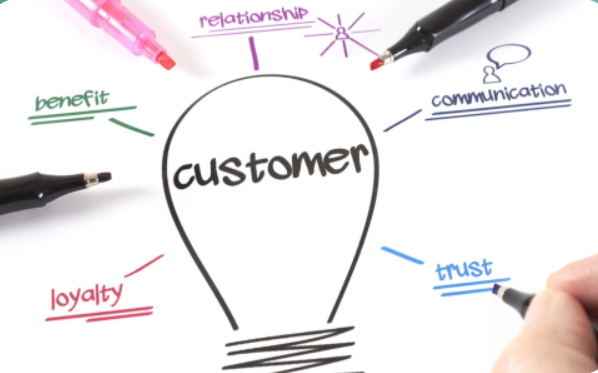
Avoiding Pitfalls
Running a dropshipping business is exciting, but there are traps. If you know what to look for, you can avoid mistakes. This helps your shop run well.
Common Mistakes
Marketing Gaps
Many new dropshippers forget about marketing. You cannot just hope people find your shop. That almost never works. Here are mistakes you should not make:
Do not skip market research. Guessing what people want is risky. You might sell things no one buys. Always check trends and test products in small amounts.
Pick a clear niche. If you try to sell to everyone, your brand is easy to forget. Focus on one group and build your shop for them.
Do not ignore email marketing. Many shops miss repeat sales because they do not collect emails. Start early and send helpful updates or offers.
Do not rely only on organic traffic. Paid ads, social media, and emails help you reach more people. Use different marketing ways for better results.
Remember SEO. If you do not optimise your product pages, you lose free traffic from search engines.
Tip: Set goals you can reach. Dropshipping takes time and work. You will not get rich overnight.
Supplier Issues
Suppliers are very important for your business. Here are mistakes you should avoid:
Do not pick the wrong supplier. If you do not check reviews or test orders, you might get bad quality or late deliveries.
Do not use only one supplier. If they run out, your shop stops. Work with more than one supplier to stay safe.
Keep your inventory updated. Selling out-of-stock items makes customers upset. Use automation tools to keep stock levels right.
Manage orders well. Tracking by hand causes mistakes. Use order management tools to stay organised.
Listen to customer feedback. Reviews help you spot problems early and improve your service.
Fraud & Compliance
Payment Security
You must keep payments safe for you and your customers. Here is how you can protect your shop:
Use PCI-compliant payment gateways like Stripe or PayPal. These keep card details safe.
Turn on two-factor authentication for extra safety.
Add fraud detection tools to spot bad transactions before they cause trouble.
Manage chargebacks with tools like Visa RDR or Mastercard Ethoca. These help you fix disputes quickly.
Prepare all your paperwork, like business plans and supplier agreements, for payment processors.
Note: Always watch your chargeback rates and fraud alerts. High rates can mean penalties or losing your payment service.
Regulations
Following rules keeps your business safe. Here is a table to help you cover the basics:
Compliance Area | What You Need To Do |
|---|---|
Product Liability Insurance | Protect yourself if a product causes harm or damage. |
Supplier Agreements | Use clear contracts for quality, delivery, and refunds. |
Accurate Product Representation | Show real photos and honest descriptions. |
Consumer Protection Laws | Be clear about prices, returns, and support. |
Tax Obligations | Collect and pay the right taxes, including sales tax and customs duties. |
Make sure your website has clear shipping, refund, and privacy policies. If you sell to people in the UK or EU, follow GDPR rules to protect their data. Build trust by showing real reviews and using only real trust badges.
Long-Term Success
Building a dropshipping business that lasts takes more than just quick wins. You need to think about how to grow, build a brand, and keep learning. Let’s look at how you can set yourself up for long-term success.
Scaling
Product Expansion
When your shop starts to grow, you might want to add more products. Start by looking at your sales data. Find out which items sell best and which ones don’t. Drop the slow sellers and focus on what your customers love. Try new products in small batches first. This way, you can see if people like them before you invest more. Use market research to spot trends and fill gaps in your niche. Expanding your range helps you keep customers coming back for more.
New Markets
You can reach more people by selling in new places. Think about offering your products in other countries. Adapt your website and ads for local languages and cultures. Make sure you understand shipping, customs, and payment options in each market. Sometimes, using big marketplaces like Amazon or eBay helps you test demand without much risk. Offering local payment methods and currencies makes shopping easier for new customers.
Tip: Watch your key numbers like revenue, profit margins, and customer feedback. These show you when you’re ready to scale up.
Branding
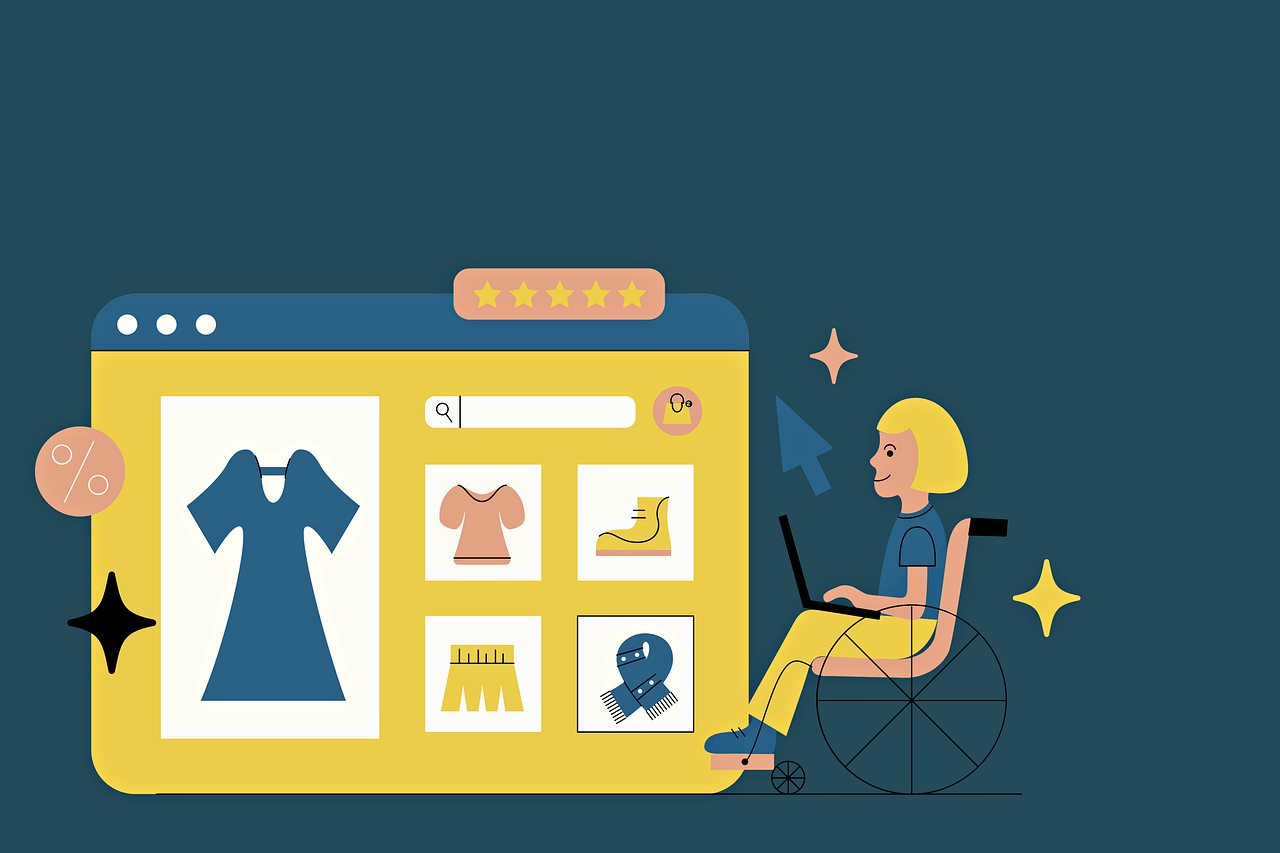
Private Label
If you want to stand out, think about private labelling. This means selling products with your own brand name and packaging. Private label products help you build trust and loyalty. Customers remember your brand, not just the product. Work with suppliers who offer custom branding. Start with your best-selling items and grow from there.
Value Proposition
Your value proposition is what makes your shop special. Ask yourself: Why should someone buy from you? Maybe you offer fast shipping, eco-friendly products, or top-notch support. Make this clear on your website and in your marketing. A strong value proposition helps you win loyal customers and stand out from the crowd.
Branding Step | What to Do | Why It Matters |
|---|---|---|
Private Label | Add your logo and packaging | Builds trust and loyalty |
Unique Value | Highlight what makes you different | Attracts and keeps customers |
Consistent Messaging | Use the same tone and style everywhere | Makes your brand memorable |
Learning
Trends
The dropshipping world changes fast. Stay ahead by watching trends in your niche. Use tools like Google Trends or social media to spot what’s new. Test new ideas quickly and see what works. If you keep learning, you can spot new chances before others do.
Networking
You don’t have to do it all alone. Join online groups, forums, or local meetups for dropshippers. Share tips, ask questions, and learn from others’ mistakes. Networking helps you find new suppliers, spot trends, and get support when things get tough.
Note: Keep improving your skills and knowledge. The more you learn, the better your business will do in the long run.
You can make money with dropshipping in 2025 if you focus on the right steps. Pick a strong niche, work with reliable suppliers, and keep your store and marketing sharp. Watch your finances and use smart tools. The dropshipping world changes fast, so stay ready to learn and adapt. Want to get started? Research a new niche or open a business account today. Your journey to make money starts now!
FAQ
What is dropshipping and how does it work?
Dropshipping lets you sell products online without holding stock. You list items in your shop. When someone buys, you order from a supplier who ships straight to your customer. You never touch the product.
How much money do I need to start dropshipping?
You can start with as little as £100–£300. Most of your budget goes to setting up your shop and running ads. You do not need to buy stock upfront. Start small and scale as you grow.
Do I need any special skills to run a dropshipping business?
You do not need expert skills. You learn as you go. Basic computer skills help. You will pick up marketing, customer service, and product research along the way. Many tools make things easier for beginners.
How do I find reliable suppliers?
Check supplier reviews and order samples. Use trusted platforms like AliExpress, Spocket, or SaleHoo. Good suppliers reply quickly and offer clear return policies. Always test their service before you add their products to your shop.
Can I dropship to customers in other countries?
Yes, you can sell worldwide. Make sure your suppliers ship to those countries. Check delivery times and customs rules. Offer local payment options if possible. This helps you reach more buyers.
What are the biggest risks in dropshipping?
You might face slow shipping, poor product quality, or supplier mistakes. Sometimes, you get chargebacks or refunds. You can lower risks by testing suppliers, using automation, and keeping customers updated.
How long does it take to see profits?
Some people see profits in a few weeks. Others take months. It depends on your products, marketing, and effort. Keep testing and learning. Stay patient and watch your numbers.
Tip: Keep learning and stay flexible. Dropshipping changes fast, so adapt to new trends and tools.

TangBuy: A Smarter Way to Dropship in 2025
If you're looking to stay competitive with dropshipping in 2025, speed and trend-awareness are key. TangBuy helps you stay ahead with real-time product trends, fast fulfilment, and factory-direct sourcing. With over 1 million ready-to-ship items, 24-hour order processing, and seamless Shopify integration, TangBuy makes it easier to test, scale, and succeed in today's fast-moving eCommerce landscape.
See Also
Essential Strategies For Achieving eBay Dropshipping Success In 2025
Profitable Dropshipping Concepts To Earn Income Throughout 2025
Easy Methods To Generate Revenue Dropshipping On eBay In 2025
High Earning Dropshipping Markets To Target In 2025
Comprehensive Walkthrough To Start Your Dropshipping Venture In 2025
